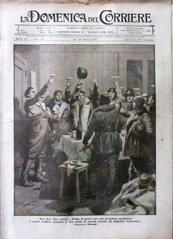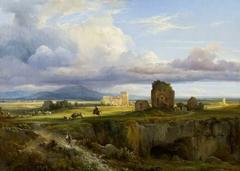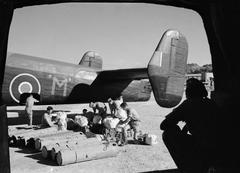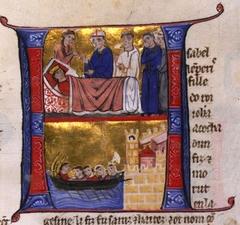Tempio di San Giovanni al Sepolcro Visiting Guide: Hours, Tickets, and Tips
Date: 24/07/2024
Introduction
Nestled in the heart of Brindisi’s historic city center, the Tempio di San Giovanni al Sepolcro, also known as the Church of the Holy Sepulchre, stands as a testament to the region’s rich historical and cultural heritage. This remarkable circular temple, dating back to the late 11th century, offers visitors a unique blend of architectural beauty, artistic treasures, and historical significance. The temple’s design was inspired by the Aedicule of the Holy Sepulchre in Jerusalem, reflecting its significance as a place of pilgrimage for those journeying to the Holy Land (Brindisiweb). Its construction under the Norman nobleman Boemondo and subsequent control by the Canons Regular of the Holy Sepulchre underscore its ecclesiastical importance, making it a must-visit destination for history enthusiasts and architecture lovers alike. This comprehensive guide provides detailed information on the history, visiting hours, ticket prices, and travel tips for exploring this hidden gem of Brindisi, ensuring a memorable and enriching experience for all visitors.
Table of Contents
- Introduction
- History of Tempio di San Giovanni al Sepolcro
- Visiting Tempio di San Giovanni al Sepolcro
- Artistic Elements and Symbolism
- The Garden and External Features
- Accessibility and Visitor Information
- Frequently Asked Questions (FAQ)
- Conclusion
History of Tempio di San Giovanni al Sepolcro
Origins and Construction
The Tempio di San Giovanni al Sepolcro was constructed in the late 11th century under the auspices of the Norman nobleman Boemondo. Its design was inspired by the Aedicule of the Holy Sepulchre in Jerusalem, reflecting its significance as a place of pilgrimage for those journeying to the Holy Land (Brindisiweb).
Architectural Significance
The temple’s architecture is notable for its circular plan, reminiscent of the Holy Sepulchre in Jerusalem. The interior features two concentric circles of columns, with eight smooth-shafted columns adorned with acanthus leaf and cubic capitals. Although the original vaulted roof has been replaced with a wooden one, the structure retains its historical charm (Brindisiweb).
Monastic Control and Pilgrimage
During the 12th and 13th centuries, the temple was under the control of the Canons Regular of the Holy Sepulchre of Our Lord Jesus Christ. This monastic order played a crucial role in maintaining the temple as a significant pilgrimage site. In 1122, Arnono, the prior of the Holy Sepulchre of Brindisi, mediated in a dispute between the Benedictine nuns of Santa Maria Veterana and Archbishop Bailardo, underscoring the temple’s ecclesiastical importance (Brindisiweb).
Transition to the Order of Malta
The Canons Regular of the Holy Sepulchre maintained control until 1489, when their properties were transferred to the Order of Malta as part of a broader reorganization of monastic properties in Italy, completed around 1560. The Order of Malta continued to oversee the temple, ensuring its preservation and use as a place of worship (Brindisiweb).
Restoration and Museum Conversion
The temple suffered significant damage from earthquakes over the centuries, necessitating extensive restoration. In the mid-19th century, Giovanni Tarantini led a restoration project to revive the temple’s historical and architectural integrity. From 1850 to 1955, the temple functioned as a museum, hosting cultural events and attracting notable figures such as Mahatma Gandhi and Rabindranath Tagore (Brindisiweb).
Visiting Tempio di San Giovanni al Sepolcro
Visiting Hours and Tickets
The Tempio di San Giovanni al Sepolcro is open to visitors every day from 8 AM to 8 PM, except on Wednesdays when it is closed. Admission is free, making it an accessible experience for all visitors.
Travel Tips and Accessibility
Located in Brindisi’s historic city center, the temple is easily accessible on foot. Opposite the temple, tourists can find L’Hospitale del Turista, a cozy souvenir shop offering local products and refreshments, enhancing the visitor experience (Cometobrindisi).
Special Events and Guided Tours
The temple occasionally hosts special events and guided tours, providing deeper insights into its history and significance. Visitors are encouraged to check local listings or inquire at the souvenir shop for upcoming events and tour schedules.
Artistic Elements and Symbolism
The Tempio di San Giovanni al Sepolcro is rich in artistic and symbolic elements. The main entrance on the north side features a small porch supported by two column-bearing lions, symbolizing the eternal struggle between good and evil. This theme is further illustrated by depictions of Christian warriors battling Saracens and deer fighting dragons (Cometobrindisi).
Inside, visitors can admire numerous frescoes depicting saints and religious scenes, such as Saint Blaise, Saint Anne, and Saint George. These artistic works, spanning from the 12th to the 15th centuries, provide a visual narrative of the temple’s religious significance (Cometobrindisi).
The Garden and External Features
The temple’s exterior and surrounding garden also hold historical and cultural significance. Latin epigraphs, including one from the time of Italy’s unification, can be found in the garden. The portal wall features ancient symbols such as a triple belt with three concentric circles, the name Stephanvs, and a Masonic symbol of a triangle with an eye inside (Cometobrindisi).
In the garden, visitors can enjoy a variety of local crops, including tomatoes, lavender, thyme, rosemary, mint, and incense, particularly during the spring and summer months. This blend of historical artifacts and natural beauty enhances the overall experience of visiting the temple (Cometobrindisi).
Accessibility and Visitor Information
The Tempio di San Giovanni al Sepolcro is conveniently located in Brindisi’s historic city center, making it easily accessible on foot. The temple is open to visitors every day from 8 AM to 8 PM, except on Wednesdays when it is closed. Opposite the temple, tourists can find a cozy souvenir shop called L’Hospitale del Turista, which offers local products and refreshments, adding to the visitor experience (Cometobrindisi).
Frequently Asked Questions (FAQ)
What are the visiting hours for Tempio di San Giovanni al Sepolcro?
The temple is open daily from 8 AM to 8 PM, except on Wednesdays.
Is there an admission fee?
No, admission to the temple is free.
Are there guided tours available?
Yes, guided tours are available. Check local listings or inquire at the souvenir shop for schedules.
What can I find in the garden?
The garden features Latin epigraphs, ancient symbols, and a variety of local crops such as tomatoes, lavender, thyme, and more.
Conclusion
The Tempio di San Giovanni al Sepolcro stands as a remarkable testament to Brindisi’s rich historical and cultural heritage. From its Norman origins and architectural marvels to its intricate frescoes and symbolic elements, this temple offers a unique glimpse into the past. Visitors can explore its historical significance through guided tours, admire the artistic treasures within, and enjoy the serene surroundings of its garden. With free admission and convenient accessibility, it is a must-visit destination for anyone exploring Brindisi. By following the tips and information provided in this guide, visitors can ensure a memorable and enriching experience at this extraordinary site. For more updates and travel tips, follow us on social media or check out our other related posts.
References
- Brindisiweb. (n.d.). Tempio di San Giovanni al Sepolcro. Retrieved from https://www.brindisiweb.it/monumenti/tempio_san_giovanni_sepolcro.asp
- Cometobrindisi. (n.d.). Discover Brindisi - Places of Interest - Tempietto di San Giovanni al Sepolcro. Retrieved from https://www.cometobrindisi.com/discover-brindisi/places-of-interest/tempietto-di-san-giovanni-al-sepolcro
- Nomads Travel Guide. (n.d.). Church of San Giovanni al Sepolcro. Retrieved from https://www.nomads-travel-guide.com/places/church-of-san-giovanni-al-sepolcro/
- Brindiscover. (n.d.). Temple of St. John at the Sepulchre. Retrieved from https://www.brindiscover.com/en/poi/temple-of-st-john-at-the-sepulchre/
- Lonely Planet. (n.d.). Tempio di San Giovanni al Sepolcro. Retrieved from https://www.lonelyplanet.com/italy/puglia/brindisi/attractions/tempio-di-san-giovanni-al-sepolcro/a/poi-sig/472402/359958



